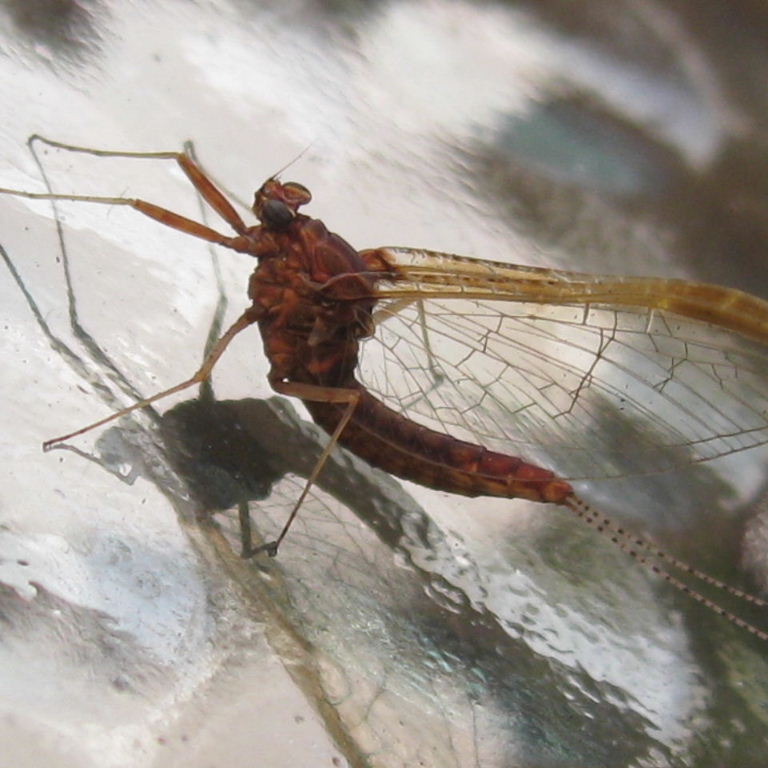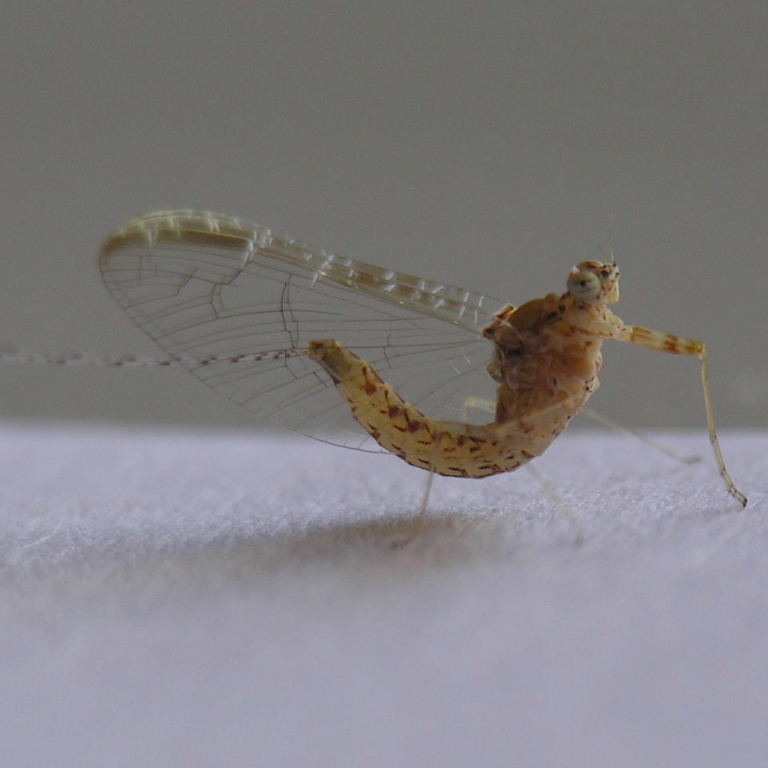Mayfly Ephemeroptera


Mayflies can be found through most of the summer months, and even spring/autumn, not just in May.
The adults, shown here, live for a few hours to a few days, only to mate. Mayflies are not true flies, some having small or vestigial hind wings.
Like Dragonflies, Mayfly larvae or nymphs are aquatic and live a year under water.


There are thousands of different species of Mayfly and some 50 different species in the UK.



Adult Mayflies have a two-pronged or, in some species, three-pronged, tail which is longer than the head and body.


The photos immediately above are of the Common or Greendrake Mayfly, Ephemera danica, the most common
in the UK and one of the species with 3 tail filaments (usually, although the more russet-marked one on the left looks as if it has only 2).
It also has spotted forewings and larger hind wings than most. My thanks to Martin Starnes for the photos of this species.



The long tail. Above is the Pond Olive mayfly, Cloeon dipterum, one of the most common.
Adults live for a couple of weeks but water-dwelling larvae live for several months and often overwinter.



Adult Mayflies don't eat at all, despite legacy mouthparts. Their larvae are a food source for
fish and wading birds while the adults are an important food source for fish, young birds and dragonflies.



Mayflies are related to Dragonflies and Damselflies. Like Stoneflies and Caddisflies, two other groups of insects
whose larvae are aquatic but adults are airborne, the presence of Mayfly larvae is an indication of good water quality.



 Non-UK Mayflies - link not yet active
Non-UK Mayflies - link not yet active